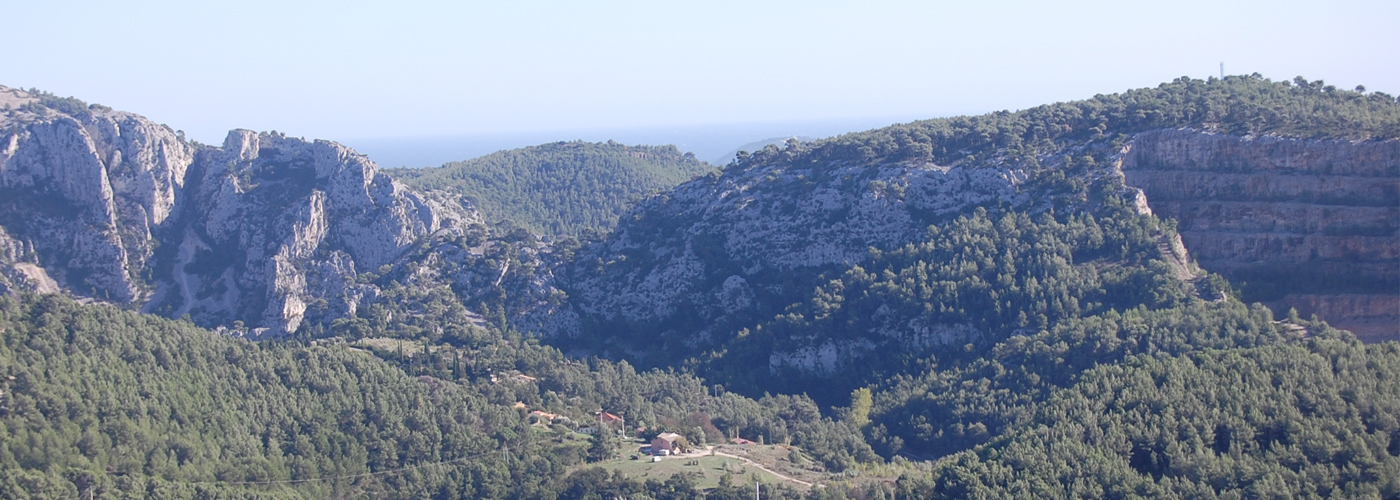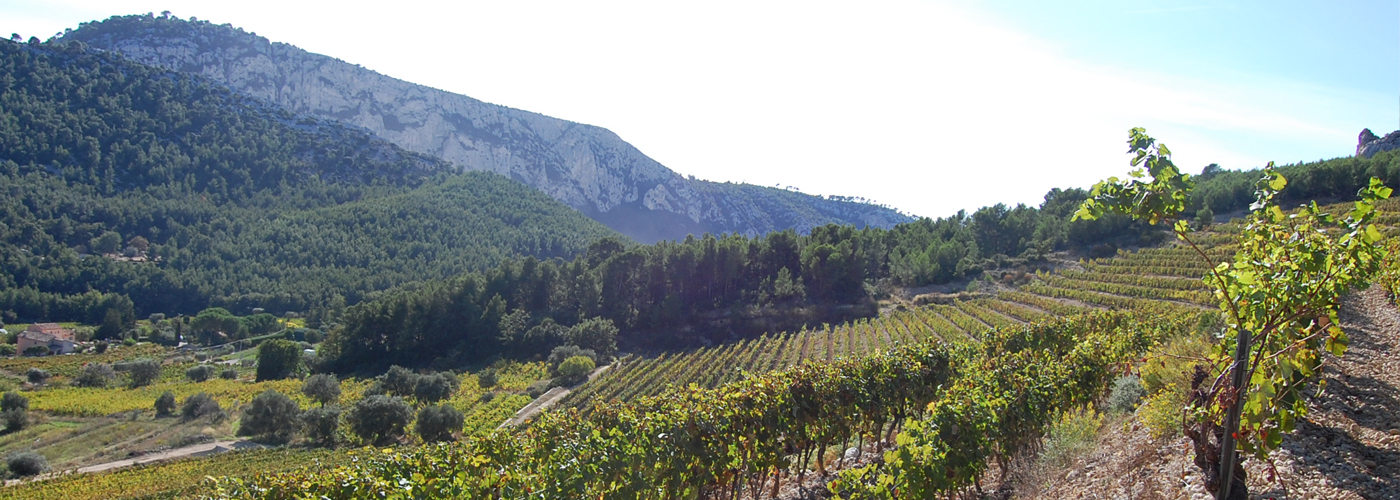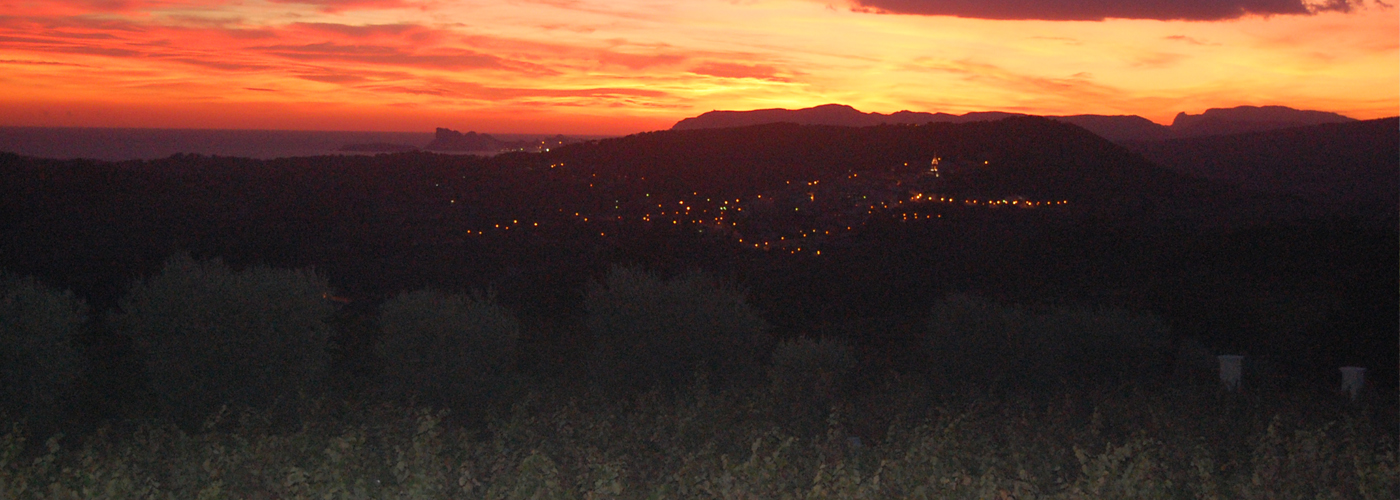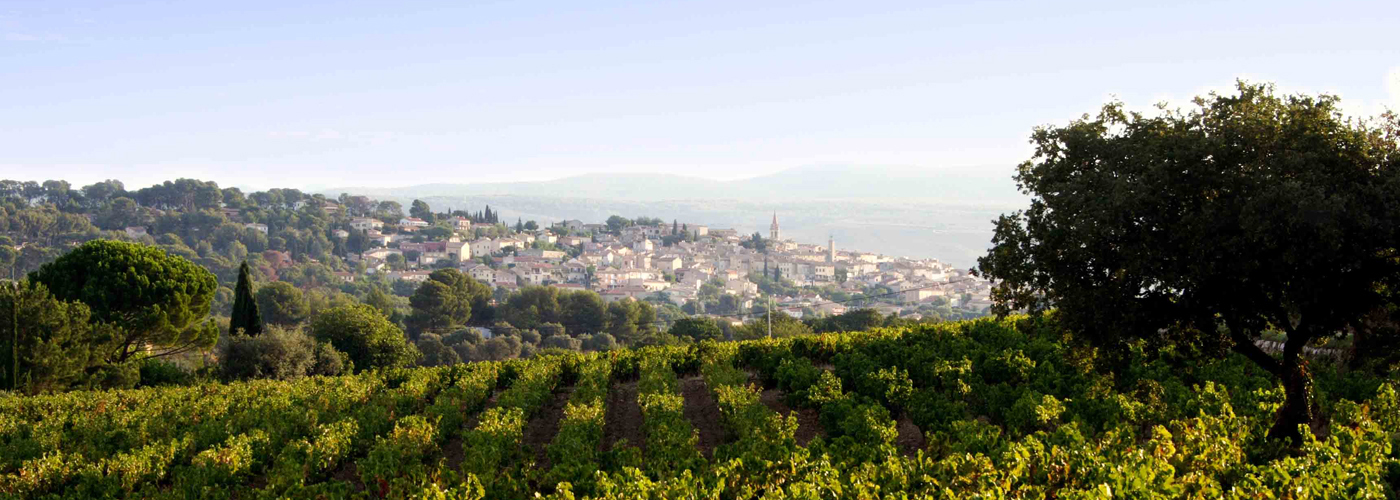THE TERROIR
From the Massif de la Sante-Baume down to the shore of the Mediterranean, the vine is an integral part of the landscape and its presence is felt everywhere. Bandol terroir faces due south and benefits from exceptional conditions of light and heat, with nearly 3,000 hours of sun exposure a year. The vineyard lies in a natural amphitheatre. The vines are planted on terraces called “restanqes” on approx 1,500 hectares (over 3,700 acres). Several generations of vine growers had to shape the hillsides to make them suitable for vine cultivation and these terraced slopes are the result of their perseverance.
A balcony overlooking the sea
In order to prevent ground erosion and to clear it of stones, the vine growers erected innumerable low dry-stone walls piece by piece, creating the famous Bandol “restanques”. The vine growers became builders in order to turn the steep slopes of the hillsides into patches of cultivable land, following the contour lines of the terrain. These grounds are particularly favorable for vine growing, and the very nature of the restanques allow for natural regulation of water resources. Today, the wine growers carry on the development of the lands abandoned at the beginning of the century. By resisting the pressure of real-estate developers, they make their contribution to the upkeep of the countryside, help protect the environment, and preserve the beauty of the landscape..
A multifaceted geology
The soils in the appellation area are mainly limestone and very pebbly, with sandy marls and sandstones in places. They are as diverse as could be expected in such an uneven landscape. The action of natural erosion on the bedrocks of the upper cretaceous age (calcareous sandstones and sandy marls) resulted in sandstone soils enriched in silico-calcareous elements. Those are the most typical soils of the Bandol appellation. In some places the soils are of Jurassic or even Triassic age and consist of red or white limestone, clay and marl or sand. The main characteristic of the Bandol appellation is the stone-like aridity and low fertility of well-drained, highly calcareous soils. To preserve this character, the writers of the Bandol decree made a point of including in the appellation area only the plots of land situated on hillsides. The natural dryness of the soils is balanced by the humidity of the air from the sea and by rainfall (600mm/yr on average); the rainfall amount is low, yet perfect to compensate for the water deficit during summer. The appellation area encompasses eight communes suspended between mountain and sea to the south of the Massif de la Sainte-Baume: Bandol, La Cadière d’Azur, Saint-Cyr-sur-mer, Le Castellet, Le Beausset, Ollioules and Sanary.









